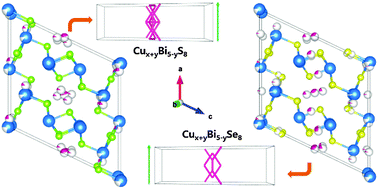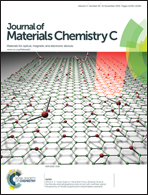Strong correlation between the crystal structure and the thermoelectric properties of pavonite homologue Cux+yBi5−yCh8 (Ch = S or Se) compounds
Abstract
Complex structured semiconducting compounds are promising thermoelectric materials due to their inherently low thermal conductivities. It has been demonstrated that the limited phonon mean free path with structural complexities such as a large unit cell, disorders, or a variety of atom types resulted in low lattice thermal conductivity. However, there is still a missing piece to elucidate which structural component manipulates the transport properties effectively. Herein we review our recent progress on the thermoelectric properties of the intrinsically disordered system, pavonite homologue Cux+yBi5−yCh8 (Ch = S or Se). Through the controlled tuning of composition and occupancy for each atomic site based on the comprehensive structural analysis, we found that the structural factor (occupancy of interstitial Cu) could be a critical basis for determining both electronic and thermal transport properties. Also, we present a short overview of common structural traits inhibiting phonon propagation in complex structured thermoelectric materials. This consideration outlines a strategy to search for new high performance complex structured thermoelectric materials in relation with the possibilities of their chemical and structural modifications.

- This article is part of the themed collection: The Chemistry of Thermoelectric Materials

 Please wait while we load your content...
Please wait while we load your content...